Organize & Preserve Precious Memories
Posted on November 30, 2016 by bob in Technology
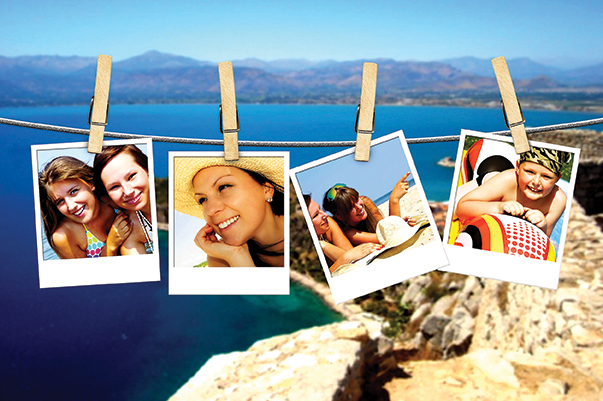
Everyone has a story. And many of us have boxes, bins, and drawers full of photos, videos, and movies that can help illustrate that story. In my case, it’s a five-foot-high fireproof jeweler’s safe. The problem is that putting it all together in a form that will make sense to our children and their children is a daunting, often overwhelming task. What’s worse than not organizing those materials is losing them to a fire, flood, or other disaster. When you hear about people who’ve lost their homes, the one thing they are often saddest about is the loss of those irreplaceable memories. And let’s face it, life is finite. How many of us lost loved ones who left behind boxes of photos with no stories to explain their rich history?
Get Organized
Stacey Cahn, who runs a service called “Time In A Bottle Video Productions,” is an expert in putting together legacy stories. Her first suggestion is to organize your materials. Just taking that step will make the process less overwhelming. She says organizing materials chronologically is the best way to start, grouping your photos by events such as birthdays, weddings. Alternatively organizing by media type such as photos, movies, and videos is also helpful. If you want to write a script you should start with the assets first. When thinking about which memories to include, think about the context you’re passing along. You and your wife together is nice. but you and your wife together looking at the Grand Canyon tells a story. A picture of the Grand Canyon without people in it is just anyone’s picture postcard unless it’s spectacular.
Scanning Options
If your files are from your digital camera or a digital action camera and stored on your computer, start organizing them into file folders by date or event. If you have photos, you’ll need a scanner. Scanning itself has been a slow, often tedious process. But Epson has just introduced a high speed photo scanning device, the Epson FastFoto FF640, that dramatically improves both the speed and ease of scanning, naming, filing, and storing hundreds or thousands of photos in short order. Epson says it’s the world’s fastest photo scanner, about one snapshot a second at 300 dpi.
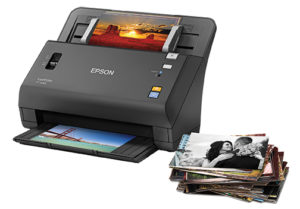
But the scanning mechanics are only a small part of what the FastFoto FF640 can do. The software makes it easy to organize pictures by dates, events, and people and can even be set so that it will restore faded photos, reduce red-eye, and color correct. If you’re not sure if you like your original pictures better than the corrected ones, you don’t have to decide — the system saves both versions. The scanner also grabs notes on the back of photos in the same pass. If you’re looking at photos that predate you, those notes may be very valuable.
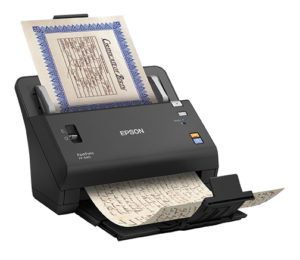
The FastFoto FF640 scanner is really optimized for snapshots. You take a bunch of photos of the same size, as many as thirty at a clip, and bingo, they are scanned, corrected, annotated, and saved. It does handle larger format pictures and documents, and comes with a plastic sleeve to protect fragile or damaged pictures. But this may not be the solution for all your scanning requirements. I have photos on stiff board dating back to the late 19th century that I wouldn’t even think about running through an automated scanner. If you have fragile photos, older photos that should not be bent (part of the FastFoto’s operations), or slides, you may need to use a flatbed scanner. We’ve had a lot of success with the Epson Perfection V600. There are plenty of other flatbeds on the market from Canon, HP, and others. One reason we like the V600 is its software, which allows simultaneous scanning of multiple slides, while putting each slide in a separate file. It will also scan negatives. (Remember those?)
Mixed Media
It’s likely you also have old movies and videos in a variety of formats. Some of these can be digitized at home, others need to be professionally 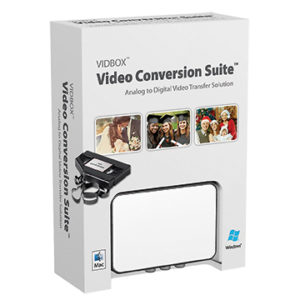 transferred. For old 16mm or 8mm movie film, the best way to get them into digital form is through a transfer service, either something you may find locally, or a scanning service such as Legacy Box or ScanMyPhotos. If you have VHS tapes you can convert them digitally on your own with a device such as the Vidbox Video Conversion Suite, a small box that takes the output of your VHS player and connects it to your computer. Or you can use a scanning or conversion service, especially if you have an unusual format.
transferred. For old 16mm or 8mm movie film, the best way to get them into digital form is through a transfer service, either something you may find locally, or a scanning service such as Legacy Box or ScanMyPhotos. If you have VHS tapes you can convert them digitally on your own with a device such as the Vidbox Video Conversion Suite, a small box that takes the output of your VHS player and connects it to your computer. Or you can use a scanning or conversion service, especially if you have an unusual format.
Storing Your Stuff
The next step is protecting your legacy assets. We advise using a couple of methods to protect those irreplaceable moments. You can store all your digital files in your computer. But computers crash. Or you can store them on CD or DVD, but those media deteriorate over time. We like solid state storage devices like flash 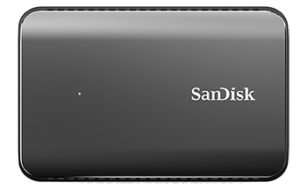 drives or solid state drives (SSD’s) like the SanDisk Extreme SSD series. The Extreme 900 has sizes up to almost 2 terabytes — which should handle anyone’s entire media library. The SanDisk Extreme 510 will hold almost half a terabyte.You can also use an external drive, but those have moving parts that can fail. I suggest taking one of your backups and sticking it in your safe deposit box and if you have a fireproof lockbox in the house, you might keep a copy there as well. For protection against changes in technology, or destruction of media, you can keep a backup of everything in the cloud on a service such as Google Drive or DropBox.
drives or solid state drives (SSD’s) like the SanDisk Extreme SSD series. The Extreme 900 has sizes up to almost 2 terabytes — which should handle anyone’s entire media library. The SanDisk Extreme 510 will hold almost half a terabyte.You can also use an external drive, but those have moving parts that can fail. I suggest taking one of your backups and sticking it in your safe deposit box and if you have a fireproof lockbox in the house, you might keep a copy there as well. For protection against changes in technology, or destruction of media, you can keep a backup of everything in the cloud on a service such as Google Drive or DropBox.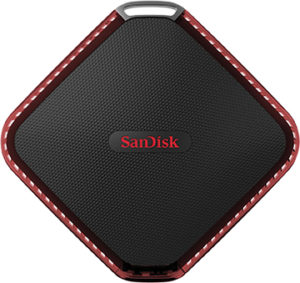
So, now you’ve organized all of your memories in a digital form and taken steps to protect them. The final step is putting them all together as a story you can share with your children and future generations. Your legacy. That can involve anything from organizing media with relevant notes all the way to a fully produced multi-media presentation. You might write a script and narrate your story on video. Another idea is for one of your children or a friend to interview you, then illustrate the interview with the appropriate media.
But that’s another story for another day.
Gary Kaye is the creator and chief content officer of Tech50+, (www.tech50plus.com), the leading website covering technology from the Baby Boomer perspective. Kaye has been covering high tech for more than 30 years with outlets including NBC, ABC, CNN and Fox Business. He is a regular contributor to AARP and other websites on issues regarding the nexus of technology, seniors and baby boomers.









